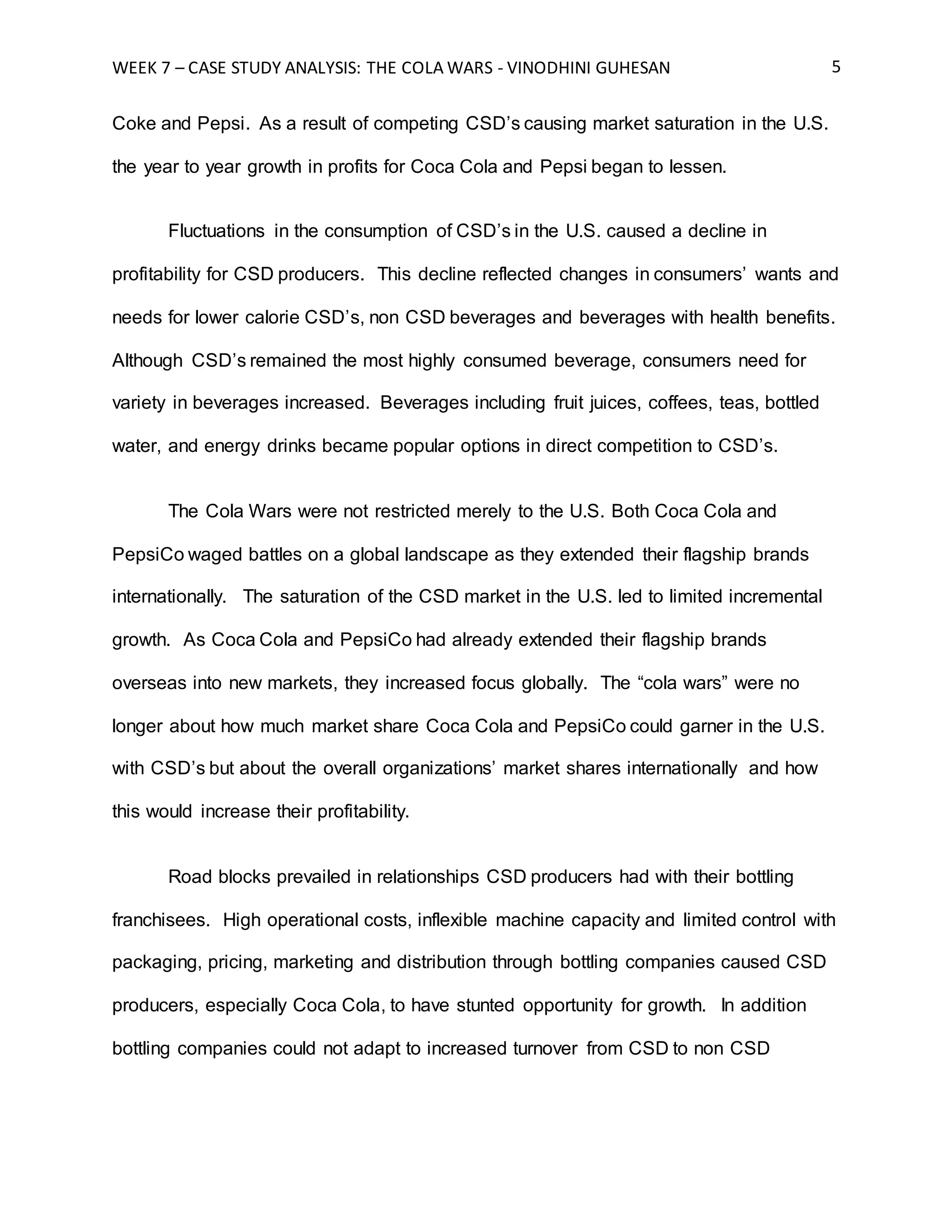The document analyzes the competition between Coca-Cola and Pepsi in the carbonated soft drink (CSD) industry, illustrating how both companies adapted to changing consumer preferences and market conditions over a century. Key issues highlighted include market saturation in the U.S., challenges with bottling operations, and the necessity for innovation and global expansion. Recommendations focus on streamlining business operations, restructuring bottling relationships, and diversifying product offerings to improve profitability and market reach beyond traditional CSDs.










